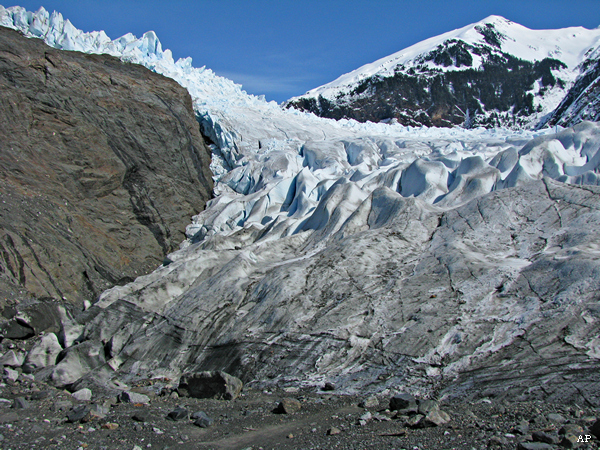
Archaeologists usually classify the period between 25,000 BCE and 6,000 BCE in Alaska as Stage 1, an era in which the first evidence of human habitation occurs. During much of this time, much of North America was under glacial ice and the sea levels were much lower. In the lower forty-eight states of the U.S., the time period known as the Archaic begins about 6,000 BCE. By 5,000 BCE, the ice had retreated and the sea levels had risen to approximately their current levels.
In general, the archaeological data for human occupation during this time tends to be scarce. Don Dumond, in a chapter in the Handbook of North American Indians, summarizes the data: “Excepting some few bone artifacts that can be placed only inferentially within a wider cultural context, debris that is of clearly attested antiquity and of absolutely indisputable human origin is almost totally confined to stone assemblages that are largely composed of products of the plentiful production of microblades and blades from cores of a certain variety in size and shape, but with some significant portion of the blades pressed or struck from well-formed cores of carefully constructed wedge shape.”
Microblades are fairly small stone blades which are usually placed in a wooden or bone handle to form a spearpoint, knife, or other cutting tool. Overall, the stone tools from this time are similar to those found in Siberia from the same time period.
Listed below are a few of the archaeological sites in Alaska from this time period.
By 13,000 BCE, people were occupying the Trail Creek Caves on the Seward Peninsula. They were hunting bison and horses. In order to prevent their dogs from damaging the animal hides while hunting, they broke the canine teeth. At this time, Alaska was still connected to Asia by the Bering Land Bridge.
By 12,000 BCE, Indian people were occupying the Swan Point site in the Tanana Valley. With regard to artifacts, they were using microblades.
In 11,600 BCE, Indian people were using the Mesa site.
By 9,800 BCE people were occupying sites in the Nenana and Tanana River Valleys. They were making fluted projectile points, bifaces, and unifacial end and side scrapers. They were hunting mammoths as well as other now-extinct Ice Age mammals. They were also eating cranes, ducks, swans, wild geese, beaver, squirrel, and caribou. At the Broken Mammoth site, Indian people had a microblade industry.
With regard to the now discredited idea that Clovis people were the first Americans, anthropologist James Dixon, in his Bones, Boats, and Bison: Archeology and the First Colonization of Western North America, writes: “The differences between the type of artifacts from these sites and Clovis sites to the south suggest to some archeologists that these early sites are not directly related.”
Some anthropologists consider the Nenana industry in Alaska to be similar to the Upper Paleolithic industries which are found in Siberia.
In 9,710 BCE, Indian people at the Swan Point site in the Tanana Valley were making a variety of stone tools, including microblades, dihedral burins, pebble hammers, and split quartz pebble tools. They were also shaping mammoth ivory.
In 9,710 BCE, Indian people at the Spein Mountain site were using lanceolate points which resembled the points at the Mesa site.
By 9,660 BCE, Indian people had re-occupied the Mesa site on the north side of Brooks Range. Among the tools being used at this time were lanceolate projectile points, thin bifaces used as knives, and hammer and anvil stones. Most of the projectile points—80%—were bifaces. The projectile points have a concave base with some thinning, although this is not true fluting, and they have heavily ground proximal edges and bases.
Some anthropologists feel that the Mesa Complex tools are similar in technology to the Agate Basin and Hell Gap points which are found on the High Plains of the Lower Forty-Eight and Canada. However, the Mesa Complex points have concave bases which are like the Goshen and Plainview points, which are also found primarily in the Lower Forty-Eight.
In 9,500 BCE, Indian people at the Upper Sun River site had a subsistence pattern which included fish, birds, and small game. They occupied a seasonal semisubterranean house at the site in the summer. A three-year-old child—dubbed Xaasaa Cheege Ts’eniin (Upward Sun River Mouth Child, in Athabascan) was buried at the site.
In 9,470 BCE, Indian people began to occupy the Putu site on the north flank of the Brooks Range. They were using both fluted and non-fluted points. The fluted points were made from obsidian and chert. They were also using burins and flakes similar to the Denali complex.
In 9,470 BCE, Indian people began to occupy the Healy Lake Village site in the Tanana Valley.
In 9,000 BCE, people using a microblade tradition reached the western portion of the state from Asia. Archaeologist Stuart Fiedel, in his Prehistory of the Americas, reports: “The Paleo-arctic tradition was clearly derived from northeastern Asia, where similar microblades, struck from small wedge-shaped cores, were present in the Dyuktai culture of Siberia by 14,000 B.C., and were used in northern Japan by 8,000 B.C.”
In 9,000 BCE, people using the Chindadn tool complex were using the Dry Creek site in the Nenana River Valley.
In 8,740 BCE, people using microblades occupied the Dry Lake site. Their tool kit included burinated flakes, lake biface blades and smaller bifaces that were used as knives.
In 8,343 BCE, Indian people were now occupying the Hidden Falls site on Baranoff Island. The people were using a microblade technology.
In 8,300 BCE, Indian people occupied the Broken Mammoth site. They were hunting bison, elk, river otter, Dall sheep, porcupine, ground squirrel, marmot, red squirrel, goose, duck, and ptarmigan. They were also involved in fishing.
By 8,320 BCE Indian people were living at Ground Hog Bay in southeastern Alaska.
In the interior of Alaska, Indian people occupied the Panguingue Creek site by 8,200 BCE. They were using lanceolate projectile points.
In 8,050 BCE, Indian people began to occupy the Spein Mountain site east of the present-day town of Bethel. At this time there were no trees in the region.
In 7,907 BCE, the Akmak site was occupied. The stone tools included end scrapers, gouges, knives, and shaft straighteners. Douglas Anderson, in the Handbook of North American Indians, writes: “Narrow grooved shaft straighteners of basalt suggest that bows and arrows were used.”
The microblades at the site were of a type found in sites in Siberia, Mongolia, Japan, and central Alaska. Douglas Anderson writes: “During the last centuries of the Bering land bridge and for several millennia afterward, Arctic groups throughout eastern Siberia and Alaska must have remained part of a broad interaction network.”
Akmak was a dwelling site. Douglas Anderson writes: “The Akmak people who used the site carried out a wide range of activities including hide preparation, butchering, carving on hard and soft materials (perhaps on ivory), planing, chopping, and the manufacture of weapons. Stone tools apparently were finished and resharpened at the site but were blocked out or made elsewhere.”
In 7,700 BCE, Indian people at the Onion Portage site were using the Akmak assemblage which includes microblades.
In southeastern Alaska by 7,500 BCE, Indian people were engaged in a coastal marine subsistence pattern which includes fishing and the gathering of shellfish. Almost all of the diet was based on marine foods. With regard to On-Your-Knees Cave (49-PET-408), anthropologist James Dixon writes: “Discoveries at this site inferentially demonstrate that humans living along the coast of Southeast Alaska were using watercraft, were primarily dependent on marine foods, had established trade networks, and were capable of intercoastal navigation by 9,200 B.P.” (note: B.P. means “before present,” which means before 1950—when radiocarbon dating began. B.C.E. means “before current era.”)
The DNA from the remains of one individual in the cave carries markers which were found in people living on Siberia’s Chukotka peninsula.
Indian people with a maritime economy were living on Prince of Wales Island off the coast of Alaska by 7,200 BCE. The obsidian for the microblade tools which they were using comes from Mount Edziza, which is on the mainland about 120 miles away.
By this time, the trading of obsidian and quartz crystals by watercraft routes was widespread along the northwestern Pacific Coast from the Queen Charlotte Islands to southeast Alaska.
In 7,120 BCE, the Indian people using the Trail Creek caves had a microblade technology. The caves at this time were serving as shelter and a lookout for caribou hunters.
Indian people using microblades were living on Baranoff Island in southern Alaska by 7,110 BCEE.
The tiny southern Aleutian island of Anangula was occupied by 6,750 BCE. Philip Kopper, in The Smithsonian Book of North American Indians: Before the Coming of the Europeans, reports: “The place was virtually barren of vegetation—no trees and only a few berries and greens in summer, together with indigestible grasses. Fish, shellfish, birds, and sea mammals sustained the people.” Kopper also reports: “In Anangula the houses were small, oval, semi-subterranean structures with frames of driftwood covered with matting and live sod rooted in an insulating layer of earth.”
About 75 people lived on the island. The village was not a seasonal camp, but was permanently occupied.
The stone technology is a core and blade tradition which looks like it was strongly influenced by the stone technology of northeastern Asia. Allen McCartney, in the Handbook of North American Indians, writes: “The Anangula core and blade assemblage is the oldest known evidence of human occupation in the Aleutian chain.” McCartney also reports: “The Anangula assemblage is dominated by small to large blades struck from polyhedral cores of wedge and other shapes, and flakes and platform tablets from this manufacturing technique.”
At the time of first occupation, Anangula appears to have been an island which means that the first inhabitants would have had to have boats. Allen McCartney writes: “The location on the Bering Sea coast, of course, suggests that Anangula people were marine-oriented, but there is no direct evidence that they possessed boats or the degree of maritime expertise expressed by later Aleuts.”
In the interior of Alaska, Indian people were using the Carlo Creek site in the Nenana River Valley as a fall and winter hunting camp by 6500 BCE. They were hunting caribou, sheep, and ground squirrel.
In 6,500 BCE, Indian people at the Goldstream Creek site near the present-day town of Fox were using bone projectile points. According to anthropologist James Dixon: “Similar large bone projectile points, possibly atlatl dart points, may have been an important component of Northern Paleoindian tradition weapon systems.”
In 6,500 BCE, Kobuk complex hunters were using campsites along the edges of the Kobuk River. Douglas Anderson writes: “The ancient hunters made camp fires of willow branches and, in some cases, of caribou bone. Their fires were relatively small and frequently did not get hot enough to oxidize the moist sand upon which the fires were built.”
The tiny southern Aleutian island of Anangula was abandoned when volcanic ash blanketed the island in 6,250 BCE.
Indian people in southeastern Alaska were using a variety of stone tools, including microblades, anvil stones, hammerstones, and whetstones by 6,230 BCE. They were gathering shellfish, including horse clam and sea urchin. They were hunting seals, sea lions, and beaver.
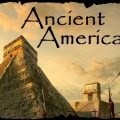
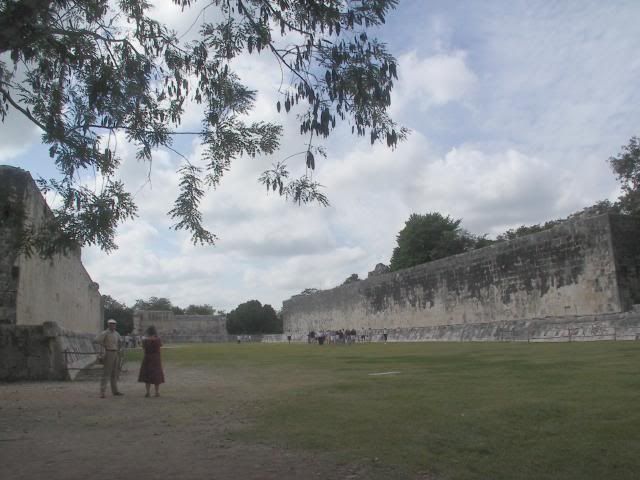
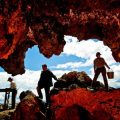
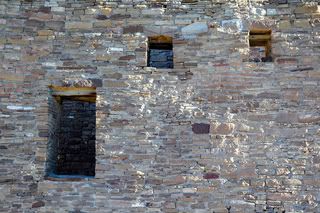
Leave a Reply